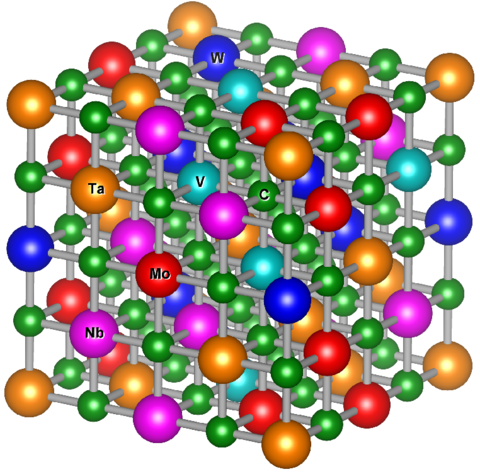Seeking materials with high melting temperature and structural stability

A high-entropy carbide HEC-16: MoNbTaVWC5 that forms a single phase with spark plasma sintering. It was designed, synthesized, and tested using MGI-facilitated strategies. See https://www.nature.com/articles/s41524-020-0317-6.
Credit:
Duke University
Created September 2, 2021

